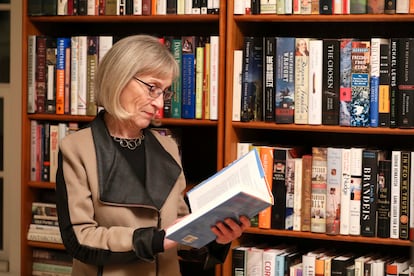Claudia Goldin’s lessons on the gender gap
The new Nobel Prize winner proved that trusting economic growth to reduce imbalances is a mistake

What kind of public policies can reduce the gender gap? Income inequality between men and women is a problem everywhere. Women’s participation in the labor market continues to be about 10% lower than that of men, and the wage gap is close to 13%. In economic terms, the situation is inefficient and unequal.
The salary disparity implies an inefficient use of resources. Despite the improvement in educational levels, women continue to participate less in the labor market than men. On the first day of an Economics course, I always ask my students what economics is. Someone always says it has to do with money. But economics is a social science that goes much further. It has to do with how we make decisions and the effects they have on our individual and collective well-being. The gender gap is a perfect example of an issue that should concern economists.
We cannot solve the gender gap without truly understanding its causes. We have laws that clearly enact equal pay. There has been enormous progress in women’s access to higher education, although, unfortunately, not everywhere. The gender gap persists. And that is why Claudia Goldin’s work is relevant. A professor of Economic History at Harvard University, she analyzes the labor market, particularly the gender gap. Her work sheds light on a complex issue and plays a valuable role in helping to design effective policies.
Goldin began wondering about the persistence of the gender gap in the 1990s. Her data analysis includes a period of almost 200 years and yields interesting conclusions. Firstly, she debunks the myth of the existence of a relationship between economic growth and the reduction of the gender gap. Other variables determine whether gender inequality increases or decreases. Trusting that economic growth will reduce the gender gap is a mistake. In the United States the gap decreased significantly, and women’s participation in the labor market increased, in the 1970s.
Professor Goldin concludes that two factors explain the improvement. One of them is the improvement in education and the other is access to the contraceptive pill. Marrying later and postponing motherhood for a few years allowed many women to consider a career and encouraged them to enter the labor market. Women join the labor market based on the opportunity costs associated with it, on the beliefs and experiences that they have had at home as children. The wage gap is an issue that goes beyond creating laws and investing in education. They are necessary, but not sufficient. It requires a cultural change. Goldin points out that that business culture often encourages promotion based on who spends the most hours at the job. Goldin affirms that the culture that rewards working longer hours has a direct impact on women’s decisions regarding their working life.
Goldin undoubtedly deserves recognition for her career with the Nobel Prize in Economics. She teaches us some interesting lessons. The first is that asking the right question is more important than the answer. When little was said about the gender gap, she asked herself the question and was not satisfied with cliché answers. The second lesson is that making correct decisions is easier when you rigorously analyze your data first. Furthermore, Goldin also reminds us of the importance of looking to the past to understand the future, not only for the academic community, but also for policymakers and the rest of society.
Sign up for our weekly newsletter to get more English-language news coverage from EL PAÍS USA Edition
Tu suscripción se está usando en otro dispositivo
¿Quieres añadir otro usuario a tu suscripción?
Si continúas leyendo en este dispositivo, no se podrá leer en el otro.
FlechaTu suscripción se está usando en otro dispositivo y solo puedes acceder a EL PAÍS desde un dispositivo a la vez.
Si quieres compartir tu cuenta, cambia tu suscripción a la modalidad Premium, así podrás añadir otro usuario. Cada uno accederá con su propia cuenta de email, lo que os permitirá personalizar vuestra experiencia en EL PAÍS.
¿Tienes una suscripción de empresa? Accede aquí para contratar más cuentas.
En el caso de no saber quién está usando tu cuenta, te recomendamos cambiar tu contraseña aquí.
Si decides continuar compartiendo tu cuenta, este mensaje se mostrará en tu dispositivo y en el de la otra persona que está usando tu cuenta de forma indefinida, afectando a tu experiencia de lectura. Puedes consultar aquí los términos y condiciones de la suscripción digital.
More information
Últimas noticias
Tiger Woods turns 50: Will he continue playing on the PGA Tour or take a back seat?
The surreal journey of James Nnaji, the Barcelona youth player selected in the NBA Draft who ended up in the NCAA
Trump claims peace in Ukraine is near, but Moscow suggests otherwise
A survivor’s account of the Interoceanic Train accident: ‘We were scared because of the speed on the curve’
Most viewed
- Oona Chaplin: ‘I told James Cameron that I was living in a treehouse and starting a permaculture project with a friend’
- Reinhard Genzel, Nobel laureate in physics: ‘One-minute videos will never give you the truth’
- Why the price of coffee has skyrocketed: from Brazilian plantations to specialty coffee houses
- Pablo Escobar’s hippos: A serious environmental problem, 40 years on
- Chevy Chase, the beloved comedian who was a monster off camera: ‘Not everyone hated him, just the people who’ve worked with him’










































